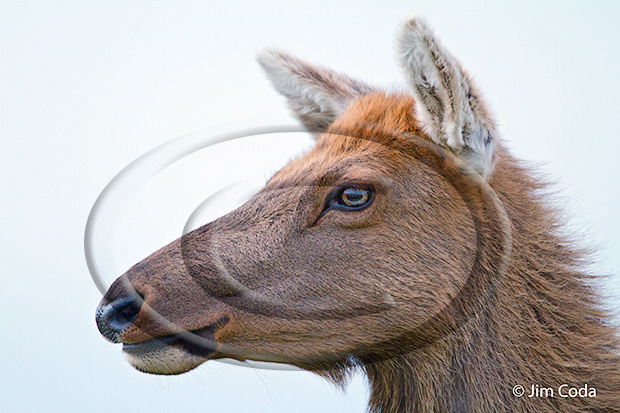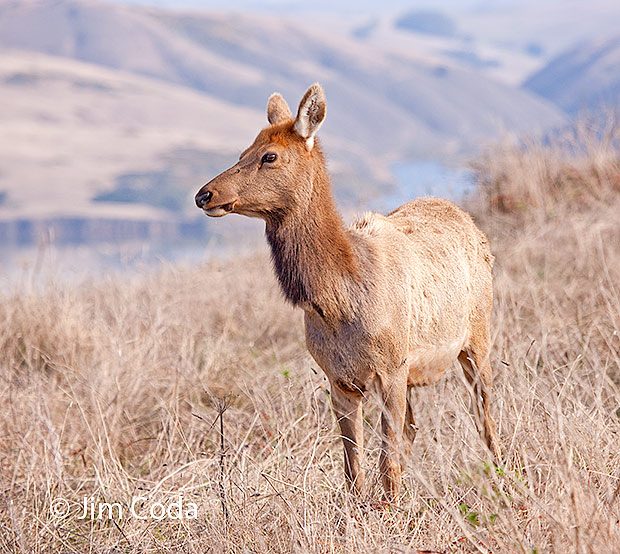Ear-Tagged Elk

Here is an ear-tagged cow elk. She is one of almost 500 elk at the Tule Elk Preserve at Tomales Point. There is an identifying number on her right ear tag. The other tag was inserted in the opposite direction. I don’t know for sure why that was done, but I’m assuming it has the same identifying number and was inserted that way so the identifying number would be visible from the rear of the animal. This herd has not increased in size for some time and therefore seems to be self-regulating. The other herd, the Limantour Herd, numbers about 100 animals.






